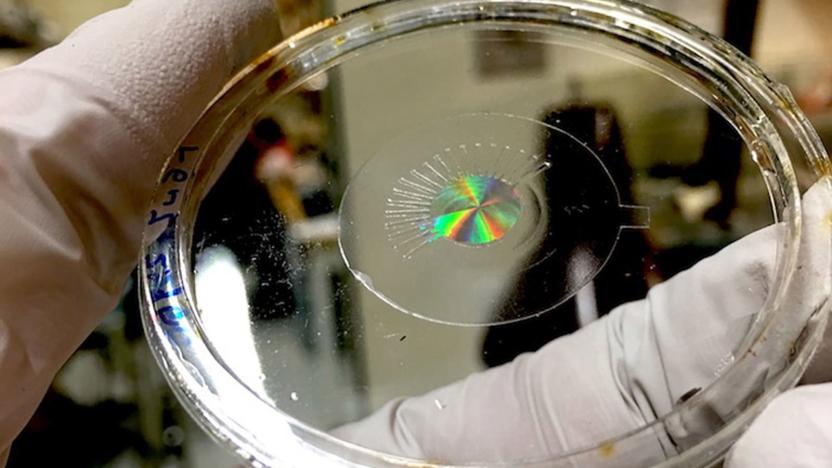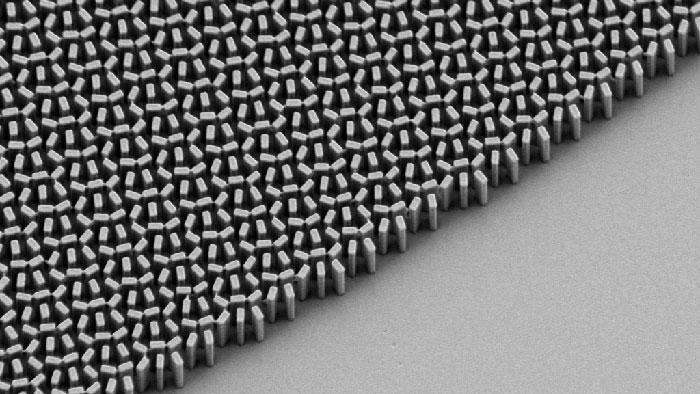metalens
Latest

Researchers create electronic lens that works better than the human eye
A new breakthrough could soon revolutionize the design of almost every optical instrument in use today, including cameras, eyeglasses and telescopes. Combining recent developments in artificial muscle and flat lens technologies, a team of researchers at the Harvard John A. Paulson School of Engineering and Applied Sciences (SEAS) have created a new lens that functions a lot like the human eye. Not only is the instrument capable of focusing in real-time thanks to an elastomer muscle, it features none of the bulk of a traditional spherical lens. It can even do some things the human eye can't, including adjusting for astigmatism and image shift, two variables that lead to blurry vision.

Lenses made from nanomaterials get closer to replacing glass
Researchers recently showed off breakthrough nanomaterial "metalenses" that could replace bulky glass optics. There was one problem, though -- it only worked on a single color at a time, meaning your smartphone could only do arty, monochromatic photos. However, the same team at Harvard's School of Engineering and Applied Sciences (SEAS), has unveiled a new material that works on a spectrum of colors from blue to green, opening up potential applications in specotroscopy, sensing and imaging.

Tiny 'metalens' could bring SLR camera quality to your phone
Your smartphone's camera quality is limited for a number of reasons (sensor size, for example), but one of the biggest factors is optics: you need a lot of glass to deliver the pin-sharp photos of a DSLR or mirrorless camera. That's where Harvard researchers might help. They've developed a "metalens" that substitutes the usual glass with quartz plates full of microscopic titanium oxide structures, whose patterns guide light toward the camera sensor. The technology not only leads to a much smaller lens (it's just 0.08 inches across in testing), but focus that beats even the better lenses you find in stores -- it can resolve details 400 nanometers wide, or smaller than a wavelength of light.


